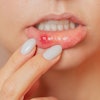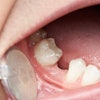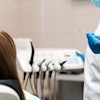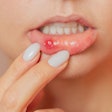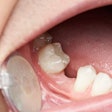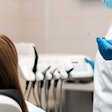
A "leaky gut" and a "leaky mouth" are like leaky plumbing pipes. If your plumbing pipes are leaking, then you have to get all of them fixed -- not just one of them!
Think about your home's plumbing pipes. If they were leaking, then toxic substances could infiltrate the surrounding ground. From there, the toxic elements could affect the immediate area as well as spread to other areas of the yard.
 Dr. Alvin Danenberg.
Dr. Alvin Danenberg.But that's not all: The toxicity could also slowly penetrate deep into the earth, contaminating wells, aquifers, and other sources of groundwater in the neighborhood. Entire communities could be poisoned due to one home's leaky plumbing pipes.
Of course, plumbing pipes can leak for numerous reasons. Perhaps the pipe structure became damaged from corrosion and other chemical changes that affected the integrity of the pipe lining. Once the structure of the pipe was weakened and began to break down, the substances inside of it began to leak out.
In the case of leaking pipes, you could ask a couple of questions to better understand the situation:
- What is in the pipe that caused it to break down?
- How do you repair the leak?
Just like with plumbing pipes, there are two areas of the body that can become "leaky" and wreak havoc not only in the immediate area of the leak but also throughout the rest of the body. I am, of course, referring to a leaky gut and a leaky mouth.
A leaky gut
Our gut is a tube, just like a plumbing pipe, and what is inside the tube of our gut is isolated from the rest of our body.
When our body breaks down ingested food, it produces a variety of enzymes. The process of digestion changes the food we eat into the smallest of molecular nutrients. These basic nutrients slowly penetrate the lining of the gut to get into your circulation and give the body all the nourishment it requires to be and stay healthy.
Approximately 38 million microbes make the gut their home to assist our digestion and the overall function of our gut. These microbes help with essential activities:
- Breaking down some food into bioavailable nutrients
- Creating their own bioactive substances to support the health of the gut and the rest of the body
- Signaling the immune system when they sense something is not right in the gut
Without this friendly and balanced garden of microbes in our gut, we would die. Yes, die!
If pathogenic microbes in the gut begin to overgrow and damage the healthy bacteria, then these bad microbes could erode the healthy lining of the gut. The integrity of the gut lining would break down, and things inside the gut that should never enter the circulatory system would begin to leak out.
This pathological condition is called a leaky gut, and just like a leaky plumbing pipe, the damage can spread far and wide in the body. The toxic waste can cause chronic systemic inflammation, putting every organ system at risk of developing chronic and autoimmune diseases.
The manifestations of these diseases may take months, years, or decades to surface. All along, the person with a chronic leaky gut could be having a variety of symptoms that seem to be unrelated to the gut.
Do you have a leaky gut?
Many of the symptoms of a leaky gut are commonly mistaken for other ailments. Unfortunately, the symptoms will continue to flare up until the underlying cause is diagnosed and treated appropriately.
Do any of these symptoms or illnesses sound familiar?
- Acid reflux
- Allergies and food sensitivities
- Anemia
- Autoimmune diseases
- Bleeding gums and tooth decay
- Brain fog
- Depression and anxiety
- Fatigue
- Joint and muscle pain
- Overweight as well as underweight
- Skin lesions, rashes, and pimples
In addition, many chronic illnesses stem from a leaky gut. You can fix the problems once and for all by fixing your gut health.
A leaky mouth
Chronic systemic inflammation caused by a leaky gut will affect the mouth. This inflammation could cause the mouth's healthy garden of bacteria and immune system to become unhealthy, resulting in periodontal disease and tooth decay.
If periodontal disease or tooth decay becomes severe, then teeth could be lost. Infection and inflammation could spread into the jawbone, blood vessels, nerve canals, and soft tissues of the body.
Debilitating and life-threatening diseases could occur just from the leakage of infection and inflammation from the mouth into the rest of the body. This situation is called a leaky mouth.
One problem most healthcare professionals aren't aware of is that a leaky gut could be a dominant cause of a leaky mouth. An article published in December 2021 illustrated how this could happen. I also detail the causal effects of the gut on chronic diseases, including dental diseases, in my mini e-book Is Your Gut Killing You?
Healthy gut, healthy mouth
In a 2020 review, Dr. Alessio Fasano, chief of pediatric gastroenterology and nutrition at MassGeneral Hospital for Children, asserted that many chronic diseases start with a leaky gut. Periodontal disease and tooth decay are chronic diseases and, therefore, no exception to his claim.
If you only treat a leaky gut but already have advanced dental diseases, then the existing diseases in the mouth will still leak into the rest of the body if not treated appropriately. And if you only treat the dental problems, then there will still be chronic systemic inflammation coursing through the body from the damaged gut microbiome and its broken epithelial barrier.
But don't despair! You can do something; however, both niduses of infection must be treated simultaneously. Both the gut and the mouth are critical areas to address.
A biologically oriented dentist could treat the mouth and gut at the same time. However, if the dentist is unfamiliar with the treatment of a leaky gut, then he or she must refer the patient to a healthcare professional who knows the gut protocols for regaining gut health.
If a gut specialist is treating the gut but doesn't know if there is a mouth infection, then he or she must refer the patient to a biologically oriented dentist for a thorough examination to determine if dental treatment is required.
Once again, I want to emphasize that both areas of infection and inflammation -- a leaky gut and a leaky mouth -- must be treated correctly and concurrently to stop the spread of disease to other parts of the body.
Dr. Alvin Danenberg has retired from the private practice of periodontics in Bluffton, SC. He continues to be on the faculty of the College of Integrative Medicine and created its integrative periodontal teaching module. He also spent two years as chief of periodontics at Charleston Air Force Base earlier in his career. His website is drdanenberg.com.
The comments and observations expressed herein do not necessarily reflect the opinions of DrBicuspid.com, nor should they be construed as an endorsement or admonishment of any particular idea, vendor, or organization.
